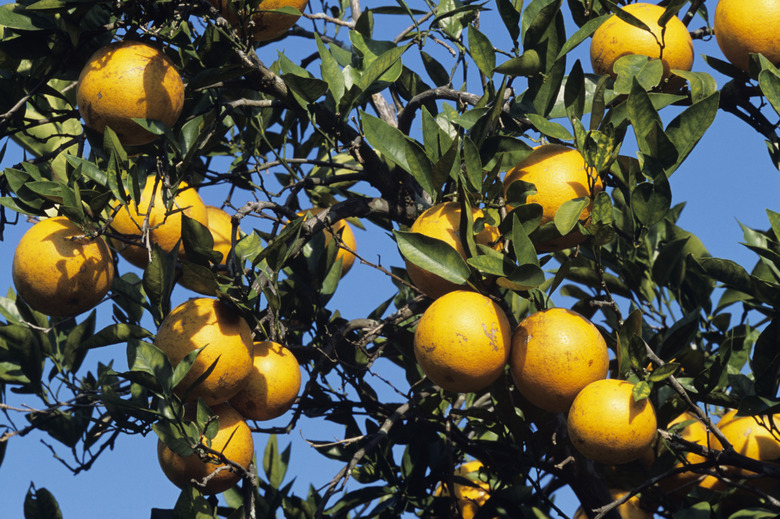How To Grow Calamansi From Cuttings
We may receive a commission on purchases made from links.
Calamansi trees are ornamental dwarf citrus trees that produce small orange-like fruit year round. Though edible, the sour fruits are better left to adorn the trees branches than for eating or juicing, though you can use them to replace lemons in the kitchen. Calamansi trees, also called calamondin trees, have a thick, glossy-green canopy. Propagate calamansi trees from rooted cuttings to expand your collection of this Chinese native citrus variety.
Things Needed
How to Grow Calamansi From Cuttings
1. Plan Your Cutting
Make the cutting in late spring or summer when the calamansi tree is producing new growth. Select new growth that has hardened slightly. The wood should be springy but not brittle. Look for a branch that is beginning to turn from green to brown as it matures.
2. Make a Cutting
Cut the branch just below a leaf node or a set of leaves, using a pair of sharp pruning shears. Make the cut horizontal. Make a second cut 3 to 5 inches higher on the branch just above a set of leaves at a 45-degree angle.
You can cut the rest of the branch into 3- to 5-inch cuttings if you want to root multiple calamansi cuttings. It's a good idea to root multiple cuttings when propagating calamansi from cuttings. Not every cutting will root successfully, so having a few extra increases your chances of success.
3. Prepare Your Cuttings
Pinch off the leaves from the bottom of the cuttings but keep the leaves at the top of the calamansi cuttings. Fill a hand-held spray bottle with water. Mist cuttings every few minutes after cutting them while you prepare the pots to keep the cuttings from drying out.
4. Prepare Your Soil
Select a tall narrow pot. Use a pot with a 2- to 3-inch diameter top and 4- to 8-inch depth. Use a pot that has holes in the bottom to allow water to drain through. Traditional plastic pots are suitable, or you may root your calamansi cuttings in peat pots. Peat pots decompose over time. When you go to plant the cuttings in the soil you can plant the whole pot without disturbing the root system.
Mix equal parts perlite, sand and sawdust in a bucket. Blend the materials thoroughly and add water until the mix is damp and crumbly. Fill the rooting pots with the damp potting mix.
5. Plant the Cuttings
Insert the bottom 2 to 3 inches of the cuttings into the pots. The bottom of the cuttings have the horizontal cut and no leaves. Mist the leaves of the cuttings with water to keep them damp.
6. Provide the Proper Humidity
Place a clear plastic bag over the top of each pot. Position it upside down with the mouth around the rim of the pots and the bottom of the bag covering the cutting to create a humid environment around the calamansi cutting. Secure the plastic bags around the lip of the pots with a rubber band.
7. Grow the Cuttings
Put the cuttings in a room that has bright indirect light. Keep the cutting between 77 and 80 degrees Fahrenheit. Remove the plastic bags once or twice a week and mist the leaves and the rooting mix with water to keep the humidity high inside the plastic bags.
8. Transplant Saplings Outside
Remove the plastic bags when each calamansi cutting produces a mature set of new leaves. Plant saplings in a nursery bed in spring. Calamansi cuttings grow 18 to 24 inches tall in the first year.
